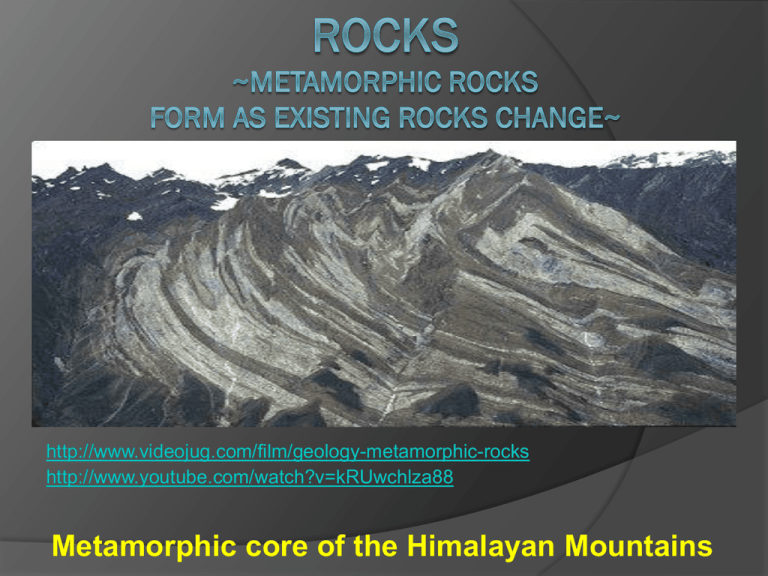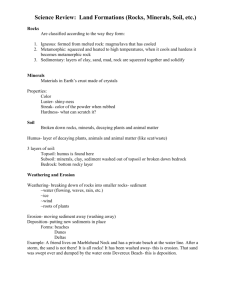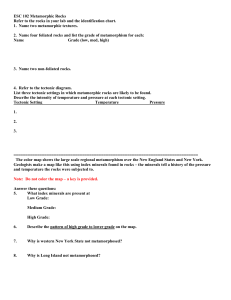Metamorphic Rocks
advertisement

http://www.videojug.com/film/geology-metamorphic-rocks http://www.youtube.com/watch?v=kRUwchlza88 Metamorphic core of the Himalayan Mountains Vocabulary METAMORPHISM The process of a rock changing by heat or pressure— or both. FOLIATION Minerals arranged in flat or wavy parallel bands RECRYSTALLIZATION Heat and pressure break the bonds that join atoms in minerals. Then the atoms join differently, making new minerals. Heat and Pressure Changes Rocks • Pressure causes minerals to flatten out in one direction. • Heat and pressure break bonds between atoms, and recrystallization occurs. • The higher the temperature and pressure, the greater the changes. How Rocks Change… 1. Sedimentary rock, like shale, can be buried when pushed into the crust. shale Increasing Heat & Pressure 2. Shale changes to slate as pressure causes the minerals to line up in layers. slate 3. Slate changes to phyllite deeper in the crust with higher heat/pressure. phyllite 4. With even more heat and pressure, phyllite changes into schist and new minerals are formed. 5. Deep within the crust, schist changes to gneiss. Recrystallization separates light and dark minerals. schist gneiss Metamorphic rocks form as existing rocks go through metamorphism –heat and pressure Metamorphic Changes Over Large Areas • Change occurs over large areas when BOTH temperature and pressure forces are high. • Mountain ranges can be made. Metamorphic Changes Over Small Areas •Change occurs over small areas with high temperature OR high pressure. •Magma can push rocks into layers or bake surrounding rocks, causing earthquakes. Foliated & Nonfoliated Rocks • Foliation develops when rocks are under pressure. • Foliation is common in rocks that have changed over large areas. • If a rock is made of mainly one mineral, it is nonfoliated. There are no minerals to separate and line up in layers. Marble and quartzite are examples of this. Rocks in the World Around Us








